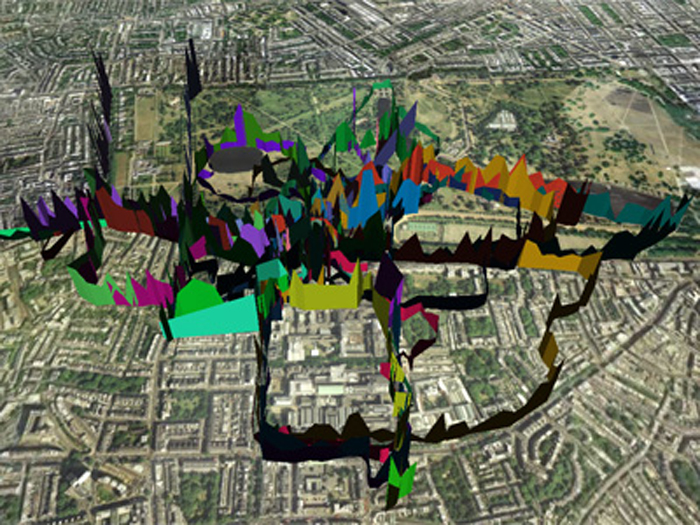Movement and mapping in urban space
The concept of drifting (dérive) is the wandering around in the urban area and the close observation and exploration of the effects of the psycho-geographical nature on the residents. Since it also includes the claim of constructive play behavior while exploring, it is opposed to the classical notions of a journey, strolling or a walk in every respect.
1. Drifting Theory of Guy Débord
The french situationist and philosopher Guy Debord (1931-1998) came up with the concept of „derivé“ (which is french for „drift“) because of the situationistic idea of disbanding the borders between poltical action, experimental art and ciritcal theory.
His theory included the idea of Psychogeography, which can be visualized in so called “psychogeographic maps”. The map is used to discover the principle paths of movement through cities and their pivotal areas.
Guy Débord studied the “dérive” theory primarily in Paris. Throughout his years of work there, he developed his personally psychogeographic map of Paris
This map, pictured below, displays Paris, divided into sections that Debord experienced to be distinct from each other in some way. The space between the sections conveys the mentally-felt distance between the physical areas. The red arrows indicate the most frequently used passages between areas.

The thought behind “dérive” is to analyse our daily habits and daily ways through urban areas. Instead of taking public transportation which wants to transport the people from A to B in the fastest way possible, walking around helps to understand a city in a different and authentic manner.
In a related situationist study by Chombart de Lauwe in 1952, over the course of a year, de Lauwe mapped out all of the movements of a student in Paris’s 16th Arrondissement. The spaces she visits through the year are surprisingly limited, and center on her house, her piano teacher, and her School of Political Sciences. The map de Lauwe made is below. The goal of this study was to reveal “the narrowness of the real Paris in which each individual lives . . . within a geographical area whose radius is extremely small.”

2. Another Way of Mapping the City
Other than the dérive, there are lots of interesting ways of looking at the city. Christian Nold , an artist, teacher and cultural activist who lives and works in London, developed a project he called Bio Mapping. Bio Mapping is a community mapping project that attaches a device that measures emotional arousal to a person, who then walks around the community and their emotional arousal levels are connected with their location to determine which areas are areas of high and low arousal. The goal is to “show the areas that people feel strongly about and truly visualize the social space of a community”.
The content was written by Jennifer Dens

